Μάθημα
Σύνδεσμοι
| Γενικοί σύνδεσμοι |
|---|
| - Δεν υπάρχουν σύνδεσμοι σε αυτή την κατηγορία - |
| Κατηγορίες συνδέσμων |
|---|
| cam |
| computer |
| Developing enjoyable second language learning software
tools: A computer game paradigm (OPENARCHIVES) This chapter attempts to examine computer game theories ludology and narratology that explain computer games as play activities and storytelling media. Founded on this theoretical explanation, a game model that incorporates gameplay and narratives is presented. From the model, two aspects of learning in game environment are identified: gameplay-oriented and narrative-oriented. It is believed that playing computer games involves at least one of these types of learning, thus this games nature can be utilized in designing engaging educational software. In addition, based on Malones theoretical framework on motivational heuristics, it is found out that there are two methods of applying computer games in language learning: extrinsic and intrinsic, depending on the integration of game designs and learning materials. Then, two cases of language learning games are scrutinized using the game model in order to demonstrate the use of computer games in language learning. | Εκπαιδευτικό πρόγραμμα πολυμέσων για τις φυσικές αρχές της μαγνητικής τομογραφίας : σχεδιασμός, ανάπτυξη και αξιολόγηση Computer aided instruction program for MRI physics : design, development and evaluations (OPENARCHIVES) Σκοπός της μελέτης ήταν η ανάπτυξη και αξιολόγηση ενός προγράμματος πολυμέσων για την εκμάθηση των φυσικών αρχών της μαγνητικής τομογραφίας από μεταπτυχιακούς φοιτητές της Ιατρικής Φυσικής του Πανεπιστημίου της Πάτρας. Η ανάπτυξη του εκπαιδευτικού προγράμματος έγινε με την χρήση κατάλληλου προγράμματος συγγραφής πολυμέσων. Δεκαοχτώ μεταπτυχιακοί φοιτητές της Ιατρικής Φυσικής κατατάχτηκαν τυχαία σε δύο ομάδες, την ομάδα των υπολογιστών και την ομάδα του βιβλίου. Όλοι οι συμμετέχοντες αξιολογήθηκαν με ένα τεστ με ερωτήσεις πολλαπλής επιλογής 2 εβδομάδες πριν την αρχή των παραδόσεων, στο τέλος των παραδόσεων και ένα μήνα μετά το τέλος των παραδόσεων. Επιπλέον συμπλήρωσαν ερωτηματολόγια για την αξιολόγηση των στάσεων και πεποιθήσεων τους σχετικά με την χρήση υπολογιστών στην εκπαίδευση. Οι βαθμολογίες τωνδύο ομάδων συγκρίθηκαν με την βοήθεια της στατιστικής δοκιμασίας ANOVA. Το εκπαιδευτικό πρόγραμμα που αναπτύχτηκε αποτελείται από 6 ενότητες για την διδασκαλία πολύπλοκων φυσικών αρχών MRI με την βοήθεια animation. Κάθε ενότητα περιλαμβάνει ένα τεστ και οι επιδόσεις των χρηστών μπορούν να καταγραφούν και να αναλυθούν με ένα ξεχωριστό πρόγραμμα. Στην ενότητα που χρησιμοποιήθηκε για την αξιολόγηση οι φοιτητές της ομάδας με τους υπολογιστές πέτυχαν στατιστικά υψηλότερους βαθμούς (Μ=80.5, SD=9.4) από τους σπουδαστές με το βιβλίο (M=61.3, SD=12.5, p=.003). Επιπλέον οι φοιτητές των υπολογιστών φαίνεται να εκτιμούν περισσότερο την εκμάθηση μέσω της χρήσης υπολογιστών συγκριτικά με τους σπουδαστές της ομάδας του βιβλίου (p=.230). Οι απόψεις των φοιτητών για την επέκταση της χρήσης των πολυμέσων στην ιατρική φυσική εστιάζονται σε θέματα σχετικά με τα κίνητρα, τις εκπαιδευτικές δυνατότητες και την αξία του περιεχομένου. Τα αναφερθέντα μειονεκτήματα ήταν ελάχιστα, και ήταν επικεντρωμένα κυρίως σε τεχνικάθέματα και σε μαθησιακές δυσκολίες. Η εκπαίδευση με χρήση πολυμέσων είναι χρήσιμη και επικουρική μέθοδος για την εκμάθηση των φυσικών αρχών MRI από μεταπτυχιακούς φοιτητές. Η παρούσα μελέτη έδειξε ότι η χρήση κατάλληλων προγραμμάτων πολυμέσων βελτιώνει την κατανόηση πολύ περισσότερο συγκριτικά με παραδοσιακές μεθόδους μάθησης. The objectives of this study were to develop and evaluate an interactive multimedia computer based instructional package in MRI physics and to provide first year medical physics postgraduate students of University of Patras with an interactive means of self-study and self-evaluation. An authoring system was used to develop the courseware package. Eighteen postgraduate medical physics students were prospectively, randomly assigned to receive instruction on the same topic from a textbook and an interactive computer module. Participants were evaluated by a multiple choice test 2 weeks before the lectures, at the end of the lectures and by a retention test 1 month after the end. They also completed questionnaires to elicit their attitudes toward the two instructional methods. Mean test scores of the textbook and computer groups were compared by means of analysis of variance. The developed MRI program is a suite of 6 interactive modules designed to dynamically teach complex MRI concepts using media-rich animations. All modules include a quiz and since patterns of use by student can be recorded a Log Decryption utility and a Log Reader utility was also developed. The tested module demonstrated that students in the computer group (M=80.5, SD=9.4) scored significantly higher on their post-test when compared with the textbook group (M=61.3, SD=12.5, p=.003). Furthermore students in the computer group seem to appreciate multimedia modules more compared to textbook students (p=.003). There were no differences noted between method of instruction and learner satisfaction (p=.230). Students’ rationale for expanding the use of multimedia in physics education seemed to focus on issues concerning motivation, instructional capabilities and content value. The disadvantages reported were few, their prevalence considerably small, especially after the intervention and were mostly focused ontechnical issues and some difficulties in learning. Computer aided instruction is a useful and effective aid for teaching MRI principles to postgraduate students. The study demonstrated that the inclusion of properly designed multimedia modules enhance conceptual understanding far more than do traditional methods. |
